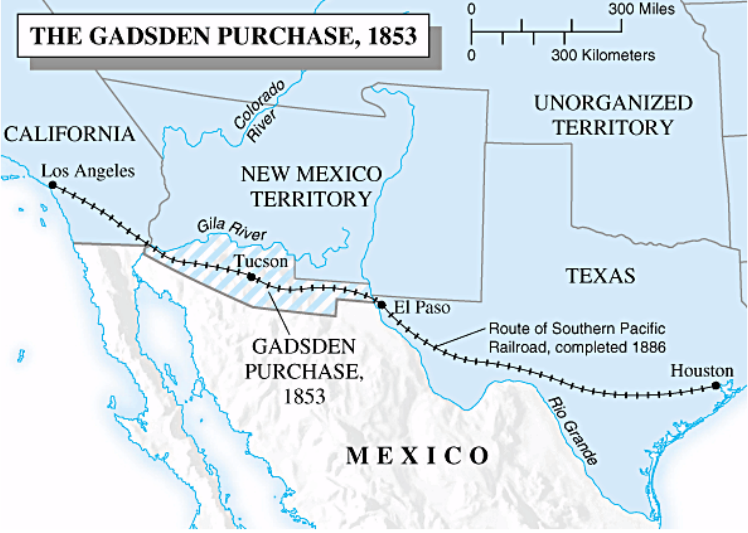Section #14 - Anti-Slavery sentiment grows due to the Fugitive Slave Act and Uncle Tom’s Cabin
Chapter 177: The “Gadsden Purchase” Supports A Southern Route For The Pacific Railroad
May 18, 1853
Pierce Focuses His Expansionist Sights On Mexico
Throughout his term, Franklin Pierce will demonstrate that he is an aggressive expansionist at heart.
His attention in this regard is directed first toward Mexico, then Central America and Cuba.
Support for his quests will come from two sources. First are corporations and financial speculators, eager to build new transportation systems and exploit commercial trade from the east to the west coast and Asia. They are joined by plantation owners who feel the prospects dimming for further expansion of slavery in the existing U.S., and are now seeking new territory to the south.
One target for Pierce, like his predecessors, is the 125 mile wide Isthmus of Tehuantepec laying between the Gulf of Mexico and the Pacific Ocean, a natural site for a canal or a railroad or both. The South is especially drawn to this site as a “back-up,” should politics route the transcontinental line to the North. But as of 1853, little progress has been made here despite Mexico having already sold the “rights of way” to US firms.
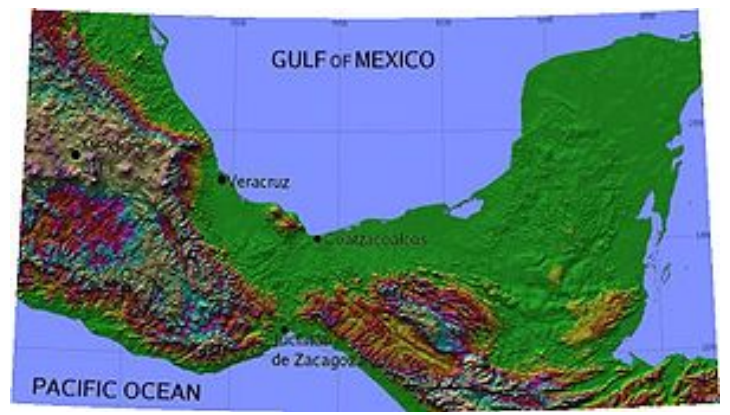
The President’s thus turns toward the Mexican provinces along the border laid out in the 1848 Treaty of Guadalupe Hidalgo. Since the end of the war, disputes over land ownership have continued unabated.
A dispute that is particularly heated centers in the Mesilla Valley, just west of El Paso.
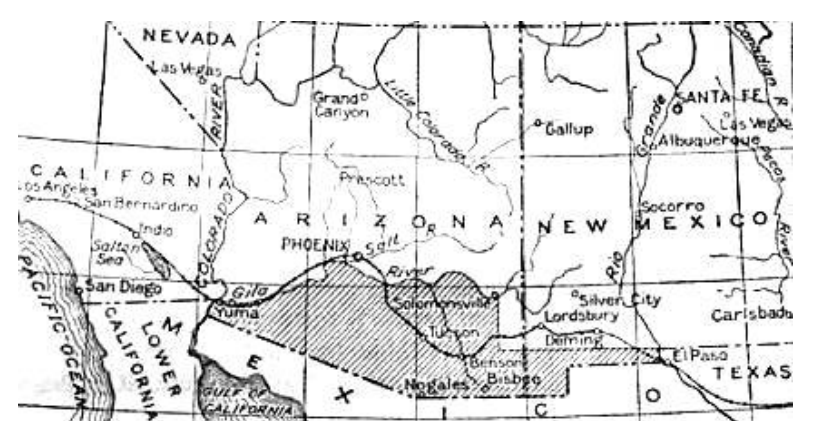
Although a survey for the 1848 Treaty clearly designates the valley as Mexican land, the second Territorial Governor of New Mexico, William Lane, suddenly lays claim to it on May 18, 1853. This results in a show of force by Mexican troops and Pierce’s dismissal of Lane to quell the tensions.
But both the President and his Secretary of War, Jefferson Davis, have had their eyes on the Mesilla Valley, together with a 550 mile strip of land extending west to Yuma, Arizona. The terrain is both open and flat, an apparently ideal route for a transcontinental railroad across the south.
In early 1853, Pierce names the South Carolinian railroader, James Gadsden, as his Ambassador to Mexico, and sends him there to settle the border disputes and try to purchase additional land.
August 4, 1853
Mexican President Santa Ana Rejects Gadsden’s Initial Proposals
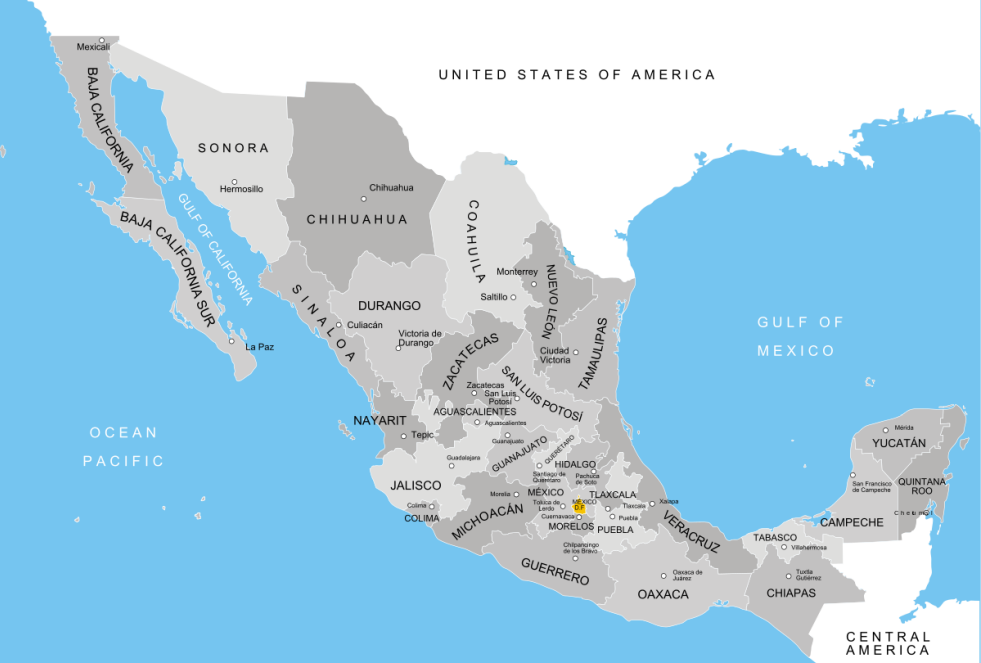
The President of Mexico at the time is the peg-legged fifty-eight year old General, Antonio Lopez de Santa Ana, infamous in America for his massacres at The Alamo and Goliad during the 1836 Texas Annexation period, and revenged upon by Generals Jackson and Scott in the 1846- 47 War.
Since then, Santa Ana’s nation has been in a state of perpetual turmoil, with liberal Catholic clerics battling military-backed conservatives for control of the government. In 1853 the old guard regains power, and on April 20 they invite the General, living in exile in Columbia, to return for his eleventh and final stint as president.
In characteristic fashion, Santa Ana declares himself “Dictator for Life” with the official title of “Hero of the Nation, General of Division, Grand Master of the National and Distinguished Order of Guadalupe, Grand Cross of the Royal and Distinguished Spanish Order of Carlos III, and President of the Mexican Republic.”
His term – which will last for 28 months before he is again ousted and exiled – is marked by financial stress for the country, exacerbated by personal corruption of those in power, himself included.
Santa Ana is back as President for only sixteen weeks when Ambassador James Gadsden shows up in Mexico City on August 4, 1853, waving much needed cash in his face for the purchase of land.
While the General needs the money, he regards America with the same level of fear that France was accorded during the age of Napoleon. Rumors of U.S. troops gathering north of La Mesilla abound, and Santa Ana fully anticipates that, in the end, America will have the land by force if not by negotiation.
Santa Ana’s deepest concerns are realized when Gadsden makes his opening proposal – proposing to purchase vast chunks of Mexican territory involving its four northernmost provinces. Four options are identified:
- $50 million to buy the provinces of Coahuila, Chimuahua, Sonora, and Baha California
- $35 million for the first three, excluding Baha
- $30 million for all land above 31’47” including Baja
- $20 million for the above, excluding Baja
December 30, 1853
The “Gadsden Purchase” Is Concluded
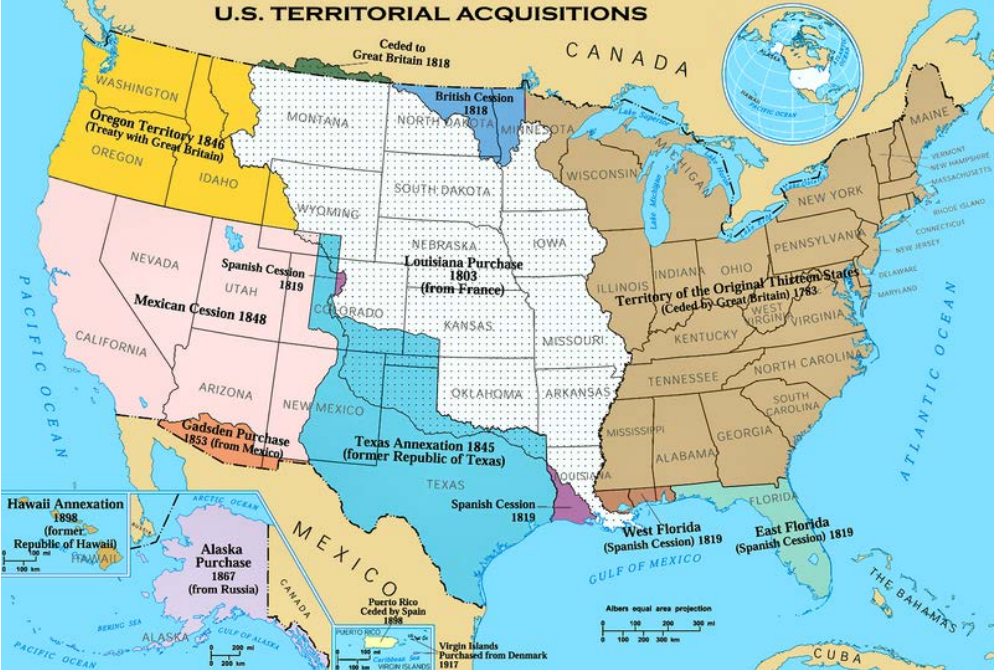
For all his many failings, Santa Ana is first and foremost a nationalist – and he cannot stomach the notion of surrendering full provinces to his long-term enemy in America.
He rejects all four of Gadsden’s offers, dismisses him for the time being, and begins to search for ways out of his dilemma. One radical move involves negotiating a power-sharing alliance with Great Britain, and feelers are sent out on this before being quickly rebuffed.
Gadsden returns to Mexico City four months later, on December 10, with a new offer in hand.
It proposes a payment of $10 million for the potential railroad site, running from the Mesilla Valley all the way to Yuma, Arizona and encompassing just under 30,000 square miles of land. After twenty more days of bargaining, the two parties reach an agreement.
This deal, known in Mexico as the La Mesilla Treaty and the U.S. as the “Gadsden Purchase,” completes the nearly 70 years westward march known as “Manifest Destiny.”
Expansion Of America’s Land Mass
| Year | Land Gained | From | Via | Square Miles | % US |
| 1784 | 13 colonies to Miss R | Britain | War | 888,811 | 29% |
| 1803 | Louisiana Territory | France | Buy | 827,192 | 27 |
| 1819 | Florida | Spain | Buy | 72,003 | 2 |
| 1845 | Texas Territories | Mexico | Annex | 390,144 | 13 |
| 1846 | Oregon Territories | Britain | Buy | 285,580 | 10 |
| 1848 | Mexico Cession | Mexico | War | 529,017 | 18 |
| 1853 | Gadsden Purchase | Mexico | Buy | 29,640 | 1 |
| Total (48 states) | 3,022,387 | 100% |
After Mexico receives the $10 million, rumor has it that Santa Ana pockets $600,000 for himself to cover his personal losses associated with the American war.
Over three decades will pass before the impetus behind the “Gadsden Purchase” is realized, in the opening of the Southern Pacific Railroad, in 1886. By that time, the South Carolina railroader and diplomat, James Gadsden is long gone, having died in 1858 at age seventy.
